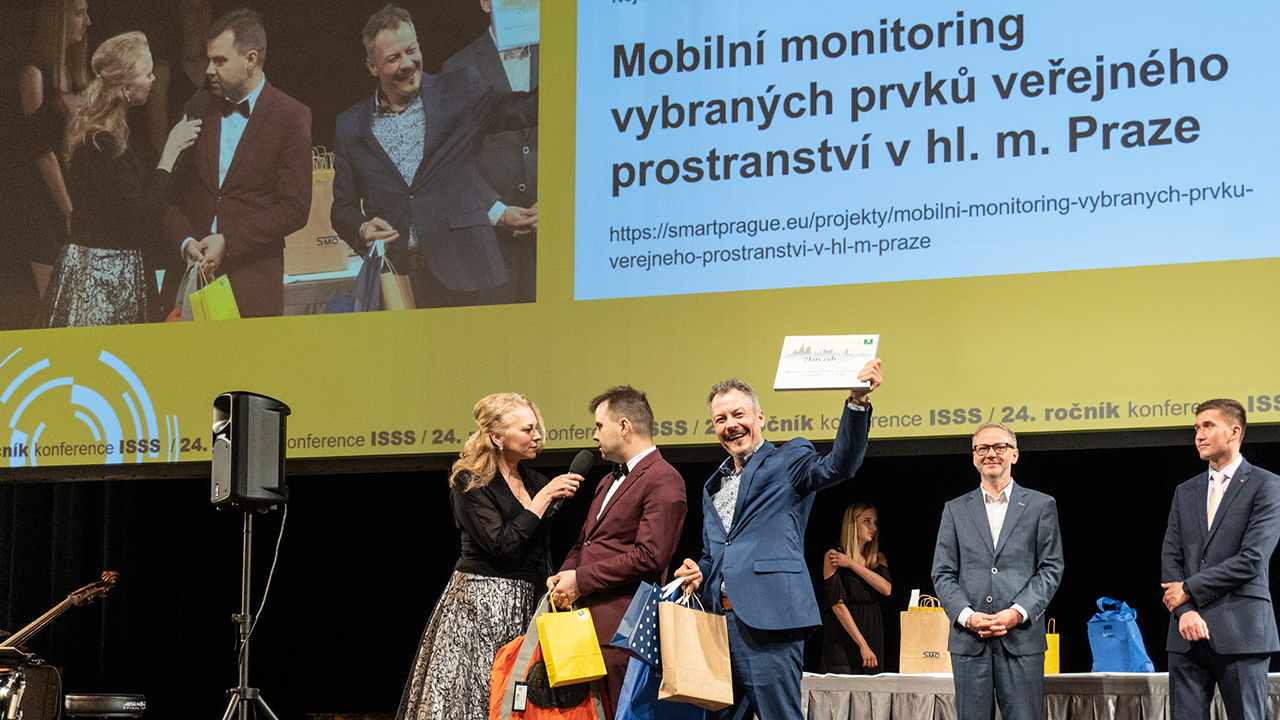
Prague, May 19, 2022 – The project, which tests the use of image analysis technology and artificial intelligence for regular monitoring of public spaces in Prague, took 3rd place in the national round of the 24th edition of the Zlatý erb competition. And that in the category of the most innovative electronic service and Smart City projects.
Expert jury on the project Mobile Monitoring of Selected Elements of the Public Space in the Capital City of Prague especially appreciated the use of image analysis technology and artificial intelligence. Through the project, the municipal company OICT will test the possibilities of state-of-the-art technologies for data collection and analysis of elements found in the urban space around us, such as parked vehicles, waste containers and traffic signs. Thanks to this, among other things, the width of the rescue lane for the vehicles of the integrated rescue service in the streets of the metropolis, the mess around the sorted waste containers or the state of public roads will be continuously monitored in real time. The obtained results will be used for more efficient management, increasing safety on city roads or spatial planning.
"We are pleased that the project caught the attention of the expert jury and it was awarded 3rd place. Of course, we greatly appreciate the award. Our project focuses primarily on designing, building and testing the system on vehicles that normally move on the streets of Prague and serve a specific purpose. These are, for example, garbage, delivery and other vehicles. And so we simply collect data that we will use to analyse the state of the road and its surroundings," says Tomáš Barczi, CEO of OICT, which implements innovative projects for the capital city.
"Using artificial intelligence, neural learning and computer vision, the system will be able to identify the required information in real time and during normal operation. The fundamental advantage, of course, is that it will manage for an unlimited time and without human intervention. The system recognizes a specific element in a public space, marks it, detects abnormalities and deviations from the initial state and, if necessary, evaluates the given incident," explains OICT project manager Vojtěch Štěch.